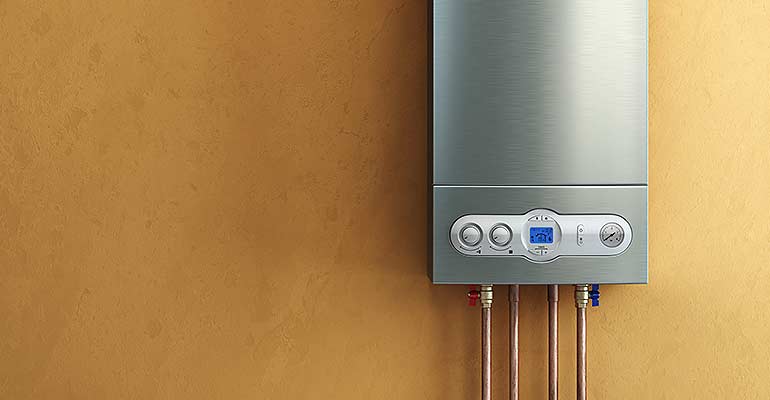Ways to Effectively Care for Your Home's Hot Water SystemSpecialist Advice for Maintaining Your Home's Hot Water System
Ways to Effectively Care for Your Home's Hot Water SystemSpecialist Advice for Maintaining Your Home's Hot Water System
Blog Article
The publisher is making a number of good pointers regarding How to Maintain Your Water Heater & Prolong its Life overall in this article further down.

Warm water is vital for everyday convenience, whether it's for a rejuvenating shower or cleaning meals. To guarantee your warm water system runs efficiently and lasts longer, routine upkeep is crucial. This short article supplies functional ideas and understandings on just how to keep your home's warm water system to stay clear of disruptions and pricey repairs.
Introduction
Maintaining your home's hot water system may seem complicated, yet with a couple of straightforward actions, you can guarantee it operates smoothly for years to come. This guide covers everything from understanding your hot water system to DIY maintenance suggestions and understanding when to hire expert assistance.
Significance of Preserving Your Warm Water System
Normal upkeep not just expands the life expectancy of your warm water system however also guarantees it operates effectively. Neglecting maintenance can bring about lowered effectiveness, higher energy bills, and also early failing of the system.
Indications Your Warm Water System Requirements Maintenance
Knowing when your hot water system requires focus can stop significant problems. Watch out for indications such as irregular water temperature level, strange noises from the heating system, or corroded water.
Recognizing Your Warm Water System
Before diving right into upkeep jobs, it's valuable to recognize the fundamental components of your hot water system. Commonly, this consists of the water heater itself, pipelines, anode rods, and temperature controls.
Month-to-month Upkeep Tasks
Regular regular monthly checks can aid catch minor concerns before they intensify.
Purging the Hot Water Heater
Flushing your hot water heater gets rid of sediment accumulation, boosting efficiency and extending its life.
Monitoring and Changing Anode Rods
Anode rods avoid rust inside the container. Inspecting and changing them when worn out is vital.
Inspecting and Changing Temperature Level Settings
Readjusting the temperature setups ensures ideal efficiency and safety and security.
DIY Tips for Upkeep
You can do several upkeep tasks on your own to keep your warm water system in top problem.
Checking for Leakages
Frequently evaluate pipelines and connections for leakages, as these can result in water damages and higher bills.
Checking Stress Relief Valves
Checking the pressure safety valve guarantees it operates appropriately and protects against too much stress accumulation.
Protecting Pipes
Insulating hot water pipelines lowers warm loss and can save energy.
When to Call a Specialist
While do it yourself upkeep is helpful, some problems need professional expertise.
Complicated Problems Needing Expert Assistance
Examples include major leaks, electrical troubles, or if your hot water heater is constantly underperforming.
Regular Expert Maintenance Advantages
Professional maintenance can include thorough examinations, tune-ups, and making sure compliance with security standards.
Conclusion
Regular upkeep of your home's hot water system is important for efficiency, durability, and cost savings. By adhering to these pointers and recognizing when to seek professional help, you can make certain a trustworthy supply of hot water without unanticipated interruptions.
Water Heater Maintenance Tips
Test the TPR Valve
Shut off the power and the cold-water supply valve. Place a bucket under the pipe connected to the temperature-pressure-release (TPR) valve on the top or side of the tank. (This valve opens if the tank pressure gets too high.) Lift the valve’s tab to let some water out, then let go. If water keeps flowing, drain the tank partway, unscrew the old valve with a pipe wrench, and install a new one. Check the Anode Rod
Put a hose to the tank’s drain cock and let out a few gallons of water. Now fit a 1 1/16-inch socket onto the rod’s hex head on top of the heater (or under its top plate) and unscrew the rod. If it’s less than ½ inch thick or coated with calcium, buy a new one, wrap its threads with Teflon tape, put it back in the tank, and tighten securely. Use this segmented rod if headroom above the tank is limited. Drain the Tank and Wash Out Sediment
Drain the remaining water in the tank into the bucket, then stir up the sediment on the tank’s bottom by briefly opening the cold-water supply valve. Drain and repeat until clean water comes out of the hose. Close the drain cock, refill the tank, and turn its power back on. Adjust the Temperature
Find the temperature dial on the side of the tank and unscrew its cover. Adjust the dial to 120 degrees using a flathead screwdriver. For every 10 degrees the temperature is lowered, you can expect to save up to 5 percent in energy costs. Turn the water heater off or the thermostat down to its lowest setting if you plan to be away from home for more than three days. Insulate the Pipes
Buy some self-sticking 3/8-inch-thick foam pipe insulation that matches the pipes’ diameter. Slide the foam over the hot-and cold-water pipes as far as you can reach. Insulating the cold-water pipe prevents condensation in summer. Peel the tape and squeeze the insulation closed. If the pipe is 6 inches or less from the flue, cover it with 1-inch-thick unfaced fiberglass pipe wrap. https://www.thisoldhouse.com/plumbing/21016402/how-to-maintain-a-water-heater

As a keen reader about Tips on Maintaining a Water Heater, I think sharing that piece of content was really useful. Sharing is nice. Helping people is fun. I value reading our article about Tips on Maintaining a Water Heater.
Need Help? Hire Us Now! Report this page